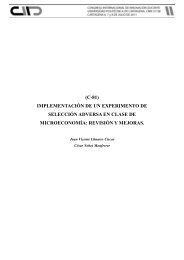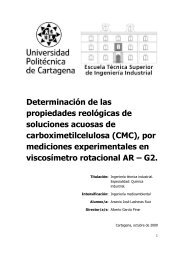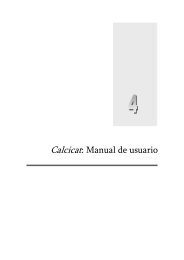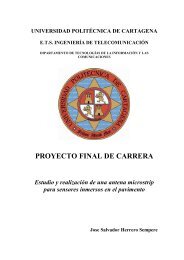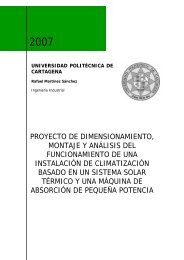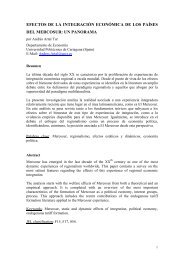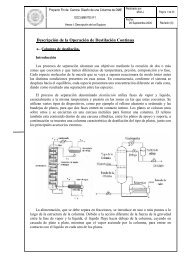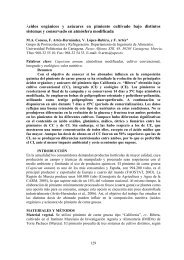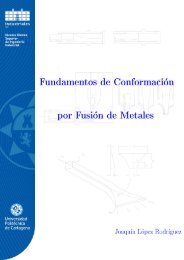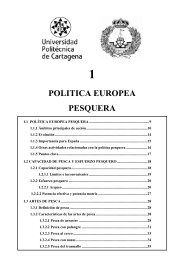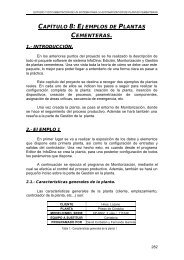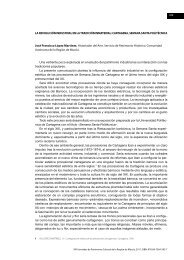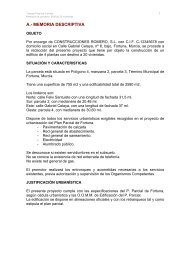Predistorted Ku-band rectangular waveguide input filter
Predistorted Ku-band rectangular waveguide input filter
Predistorted Ku-band rectangular waveguide input filter
You also want an ePaper? Increase the reach of your titles
YUMPU automatically turns print PDFs into web optimized ePapers that Google loves.
for predistorted <strong>filter</strong>s to indicate the Q that a classical <strong>filter</strong><br />
must provide in order to show the same pass<strong>band</strong> flatness.<br />
However, due to physical limitations, this improvement in the<br />
Q produces an increase of the <strong>filter</strong> insertion losses and a<br />
degradation of return losses. As will be shown later both<br />
problems could be addressed fairly straightforward in <strong>Ku</strong>-<strong>band</strong><br />
communication payloads.<br />
A. Circuital Design<br />
II. FILTER DESIGN<br />
Classic <strong>filter</strong> synthesis techniques assume that <strong>filter</strong>s are<br />
composed of non-dissipative elements (lossless prototype <strong>filter</strong>).<br />
However, in practice <strong>filter</strong>s are made of distributed<br />
elements that show some losses. These losses are described by<br />
the unloaded quality factor Q u , which in the lossless synthesis<br />
is assumed to be infinite. If a finite Q u is considered in the<br />
synthesis, then it is equivalent to add a positive real factor δ<br />
to the purely imaginary frequency variable s = jω.<br />
δ =<br />
f c 1<br />
(1)<br />
BW Q u<br />
This shifts singularities of the <strong>filter</strong>ing function (poles and<br />
zeros) away from the imaginary axis, so that in-<strong>band</strong> insertion<br />
losses arise and reflection and transmission responses are<br />
distorted appearing a round-off in the transmission response.<br />
Classical predistortion synthesis technique allows highperformance<br />
<strong>filter</strong>ing responses using low Q resonators. This<br />
is achieved by modifying the effect of losses over the response<br />
in the synthesis process, by performing the opposite mathematical<br />
operation over (1). In consequence, when the predistorted<br />
<strong>filter</strong> works in the presence of loss a compensation occurs.<br />
However, restoring <strong>filter</strong> Q causes an increase in insertion loss<br />
and a degradation of return loss.<br />
Adaptive predistortion is an evolution of classical predistortion<br />
in which corrections are weighted by an arbitrary vector<br />
v i obtained by optimizing the <strong>filter</strong> response. This approach<br />
tries to restore <strong>filter</strong> Q to an effective or desirable quality factor<br />
(Q eff ) bigger than the Q u . This approach results in much less<br />
insertion and return loss penalty without degrading seriously<br />
in-<strong>band</strong> response linearity.<br />
In order to synthesize a predistorted response it is<br />
needed: the <strong>filter</strong>ing functions and singularities from the nonpredistorted<br />
lossless lowpass prototype <strong>filter</strong>, the <strong>band</strong>pass<br />
parameters (f c and BW ), the anticipated Q u , the desired<br />
quality factor (Q eff ) and the weight vector (v). In this work<br />
we have predistorted a six poles <strong>filter</strong> with two transmission<br />
zeros located at ω = ±2.2, centered at f c = 13.05 GHz with<br />
BW = 340 MHz <strong>band</strong>width, and RL = 21 dB. The desired<br />
target quality factor has been set to Q eff > 15000.<br />
In order to obtain the anticipated Q u the <strong>rectangular</strong> <strong>waveguide</strong>s<br />
mode chart is used to choose initial cavity dimensions.<br />
Assuming a = 2b and considering silver as material and<br />
working mode the fundamental one (T E 101 ), we choose<br />
(a/l) 2 = 0.5 obtaining an anticipated Q u of 5177, then<br />
Q eff /Q u ≃ 3. The weight vector is chosen to be v =<br />
[1.5 1.5 1.1 1.1 0.9 0.9]. We calculate the shift factor<br />
σ using the formula:<br />
f c<br />
σ i = v i<br />
BW<br />
( 1<br />
Q u<br />
− 1<br />
Q eff<br />
)<br />
with i = 1, . . . , N (2)<br />
This shift factor is applied to the poles of the <strong>filter</strong>ing<br />
function e k to obtain the predistorted <strong>filter</strong> poles e kr = e k +σ.<br />
Shifted poles must comply Hurtwiz’s condition so from (2) the<br />
maximum achievable Q eff can be computed.<br />
From predistorted poles polynomials E(s) and P (s) that<br />
define the predistorsted transfer function S 21 (s) can be calculated,<br />
since transmission zeros p k remain unchanged. Then,<br />
numerator polynomials of the reflection functions S 11 (s)<br />
and S 22 (s) (F (s) and F 22 (s) respectively) can be obtained<br />
applying the conservation of energy condition and taking<br />
paraconjugated pairs of zeros around the imaginary axis. Zeros<br />
for the polynomial F (s) are selected one by one arbitrarily,<br />
taking one of each pair. The paraconjugated polynomial<br />
F 22 (s) is composed of the remaining zeros, generating the<br />
complementary function. There are 2N possible combinations<br />
of zeros to set up the polynomials. We chose the distribution<br />
of reflection zeros maximizing or minimizing µ parameter<br />
calculated as:<br />
N∑<br />
µ =<br />
Re(f<br />
∣<br />
kr )<br />
(3)<br />
∣<br />
k=1<br />
,where f kr are the coefficients of the corresponding F (s)<br />
polynomial.<br />
The distribution of the reflection zeros sets the symmetry<br />
and synchrony of the folded coupling matrix. Supposing that<br />
the non-predistorted matrix is synchronous (without frequency<br />
offsets) and symmetric (symmetrical realization), if µ is maximized<br />
the folded coupling matrix remains synchronous but<br />
becomes asymmetrical. On the other hand, if µ is minimized<br />
the predistorted folded coupling matrix obtained is maximally<br />
symmetric but asynchronous. The later case produces a <strong>filter</strong><br />
more difficult to tune. Table I shows zeros and poles obtained<br />
for the predistorted <strong>filter</strong> computed from the non-predistorted<br />
ones. From them it is possible to obtain the predistorted<br />
folded canonical N+2 coupling matrix (see Table II), whose<br />
response is shown in Fig. 1. If the effect of loss is included<br />
in the lossless prototypes synthesized, an insertion loss of<br />
0.259 dB for the non-predistorted <strong>filter</strong> and 0.3747 dB for<br />
the predistorted one is obtained.<br />
B. Electromagnetic Design<br />
For obtaining the required coupling values of the predistorted<br />
coupling matrix in II, four different coupling mechanisms<br />
(see Fig. 2a-d) have been characterized using a full-wave<br />
EM simulator. Using these characterizations initial dimensions<br />
of the overall structure (see Fig. 2e) have been obtained. Final<br />
dimensions are obtained from full-wave EM analysis of the<br />
complete model and computer aided tuning. This later step<br />
takes into account additional interactions (parasitic effects) not<br />
considered in coupling mechanisms characterization.



